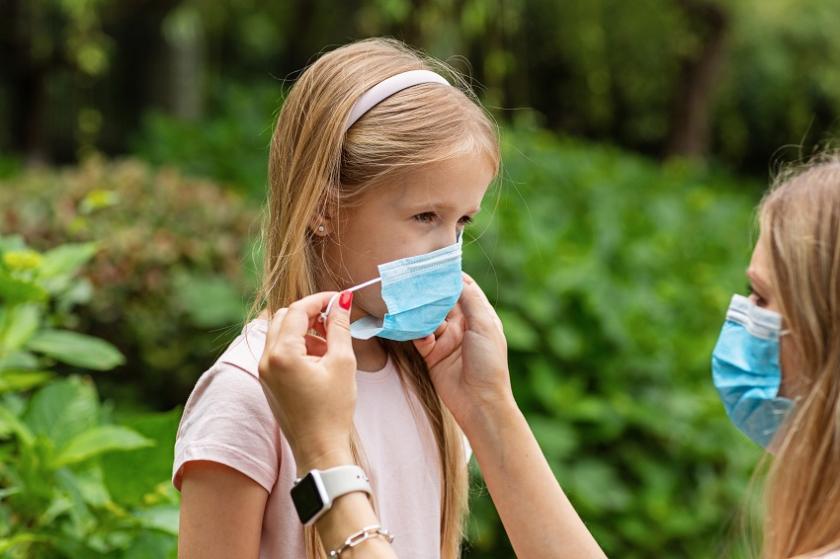Pulmonology is a branch of medicine that deals with respiratory health conditions. A pediatric pulmonologist looks into the respiratory ailments of children and accordingly treats them. These diseases mainly involve the respiratory tract being infected or compromised. A few common respiratory ailments that are treated by pediatric pulmonologists include:
- Wheezing/ Asthma
- Bronchitis
- Pneumonia
- Cystic fibrosis
When should you consult a pediatric pulmonologist?
- Respiratory issues coupled with gastric problems like diarrhea and weight gain are symptoms of a common hereditary lung and digestive disease, called, Cystic Fibrosis. While it is a life-threatening ailment, catching it early on can help extend your child’s life span.
- Any form of wheezing or compromised breathing should be taken into consideration as it can be a clear indication of asthma.
- Apnea or obstructive apnea is a condition wherein your child’s breathing stops during sleep, this can be dangerous sometimes. Symptoms to look out for are, loud snoring, breathing accompanied by noise, or feeling sleepy during the day. If you notice this in your child, you should talk to a pulmonologist who would suggest the tonsils or adenoids be removed based on the degree of the condition.
- If your child has a chronic cough that has prevailed for more than 3-4 weeks even after medication, then you should consider seeing a pediatric pulmonologist at the earliest.
- A recurring infection of the lungs, namely, Pneumonia is a serious decrement to the quality of your child’s life. You must get it consulted with a pulmonologist to build a medical plan as early as possible.
- Besides the above-mentioned ailments, anything to do with prevailing respiratory conditions must be taken to the medical professional for further investigation and medication.
How do pediatric pulmonologists test for infection/diseases?
There are many procedures to test for respiratory-related illnesses, however, the fiberoptic scope has commonly been used as a non-invasive procedure to examine the lungs and respiratory tract internally. Flexible fiberoptic bronchoscopy and pulmonary function testing are common medical testing procedures done to test for respiratory diseases.
What are allergies and why do they happen?
Allergies occur when the immune system in an individual’s body reacts to a foreign substance by producing antibodies, resulting in physical symptoms like inflammation, rashes, itchy skin, or breathlessness. Allergies can be of various types including,
- Allergy to particular foods
- Allergy towards certain medications
- Allergy caused by contact with irritants
- Allergic asthma
- Allergy to animal hair/ saliva or urine.
- Allergic rhinitis
Essentially, allergies are a genetic/ hereditary concern that mostly have no cure. Some people are just more susceptible to being affected by certain irritants/ food items/ pollen/ dust, etc.
What kind of allergies do children have?
At least 2 out of every five parents would have witnessed a terrible event, wherein the child comes across an allergic reaction to a particular irritant, of which the parents are not aware. This can cause unnecessary hassle and anxiety. While there is no definite way to determine and prevent such things, most professionals would advise allergy testing for children. While allergies don’t always lead to a severe condition, they can cause irritability and compromise an individual’s lifestyle. The most common allergies that children can have are:
- Specific airborne allergens in the air, like, pollen, dust particles, and animal fur cause an allergic reaction called Allergic rhinitis; this can lead to fever-like symptoms, blocked nose/ear with congestion, itchy or red eyes.
- Many allergens are found in particular food items; the most common allergens are found in peanuts/walnuts or other tree nuts. Amongst other less common food items are milk, fish, prawn, or any kind of seafood.
- You might have noticed that your child develops a runny nose or an itchy eye every morning during the spring season every year. This could be an allergic reaction to pollen in the air.
- Mold or dust mites are amongst other common allergens that can cause breathlessness, headaches, and other respiratory problems.
- Some babies can also be allergic to their mother’s breast milk which can be particularly harmful to the baby.
- Certain medications like penicillin can also cause allergies, which is why a drug should be administered carefully, keeping in mind the patient’s history of allergies.
- Certain other irritants can also create an allergic reaction. Gold, silver, or copper jewelry, smoke, latex material, or certain types of perfume can also induce a reaction.
How can you test for allergies?
If you notice prolonged symptoms or reactions to various food items or irritants in your child, consider seeing an allergist, a professional would be able to recommend a set of allergy tests that can help determine and even prevent the onset of certain allergic reactions.
- To test for allergies towards foods, the medical professional would observe your child’s reaction while offering foods that contain the most common allergens. This allows the allergy specialist to narrow down the options and determine which foods cause an allergy to take place; this could also be followed by an elimination test that restricts the child from consumption of certain allergy foods, which can help ascertain what foods your child can or cannot consume.
- Another form of the test requires the medical professional to put a certain allergen in contact with your child’s skin to assess any reaction to the prolonged period of exposure to the allergen. This can help understand if your child is allergic to jewelry, latex/rubber, animal saliva, etc.
- Skin prick/ skin injection test is commonly used to expose your child’s skin, externally/ internally, to common allergens. If a reaction occurs, it is most likely that your child is allergic to that particular irritant.
- In extreme cases, blood tests are carried out to test for antibodies that induce allergic reactions. When most tests fail, a blood sample will help ascertain minute details.
How to minimize the effects of allergies in your child?
It is essential to realize that allergies cannot be cured; however, appropriately administered medication can help reduce the reactive symptoms and comfort your child in times of pain. Here are few things you can do as parents to minimize the chances of your child having an allergic reaction:
- If your child’s skin is susceptible to any foreign object, avoid him/her from wearing it for prolonged periods. Make sure that you have medication at home to relieve your child’s rashes/itchiness if such an event should occur.
- Children that get an allergy by being exposed to dust/pollen must tread cautiously. Ensure that the school your child goes to is aware of his/her allergies, so it can be taken care of in the very early stages to avoid it from progressing to something much more severe like anaphylaxis.
- Avoid cleaning or dusting around a child that is sensitive to dust/pollen or mold. And make sure that curtains or pillow covers are constantly cleaned to avoid dust from forming.
- If your child has allergic reactions to certain food items, make sure that you help your child avoid consumption of these items while also checking the details behind manufactured/packaged products to eliminate the risk of exposure to allergens.
- Type I, II, III, and IV allergic reactions differ based on the type of allergen; ensure medicines are administered only after crossing out the possibility of it having allergens that your child might be sensitive to.
Apart from the aspects mentioned above, you can always consult a professional specializing in allergies for a more comprehensive check-up!
This is general information issued in public interest. Please contact your doctor for more details.

